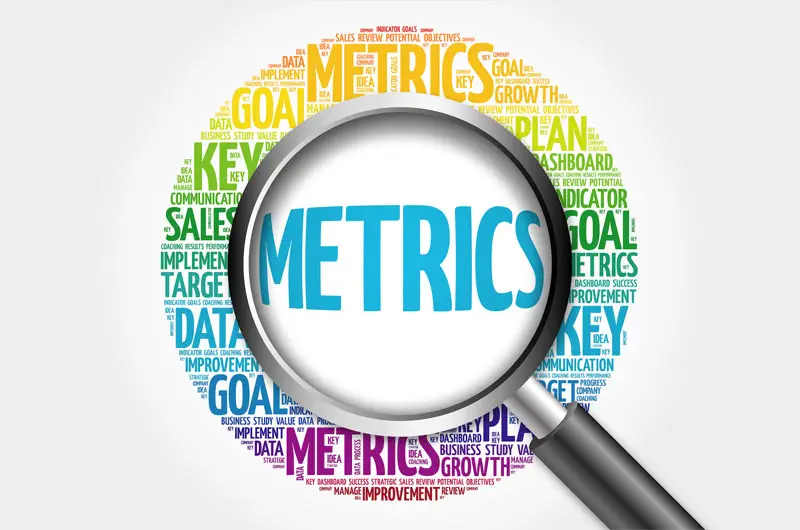Organizational Development
06 Jul Metrics for Grant-Seeking By: Kellie Brungard, GPC
Posted at 18:00h
in Competency Two, Evaluation, Funding, Funding Opportunities, Kellie Brunguard, Organizational Development
As a grant professional, are you asked to identify performance measurements for your organization or clients? Evaluating the performance of a grant department or grant professional is a nuanced task. Yet data helps leadership and the board of directors quantify the year-to-year success and progress toward department goals. All too often, an organization will set unrealistic goals without adequate resources or available opportunities or set unreasonable expectations for the number of applications an individual needs to submit. Looking at a “success rate” can fail to consider the organization's readiness, quality of program design, or ability to identify strong opportunities and stewardship. So, how can an organization effectively evaluate the performance of a grant department and set realistic goals? How can grant professionals articulate their skills and achievements to those who are data-minded?
25 May Neurodiversity for Grant Professionals By: Kellie Brungard, GPC
Posted at 11:15h
in Community, Competency Seven, Organizational Development, Professional Development, Professional Development
I attended Laura Cochran’s session, “Work with Your Brain: How to Accommodate Your Neurodiversity,” at GrantSummit 2023 with a minimal understanding of neurodiversity and its relevance in my life. Laura’s opening line was, “If you’re wondering if you should be in this room or if the topic applies to you, you’re probably in the right place!” The room was filled with grant professionals identifying as neurodivergent (someone identifying as being neurodiverse) or exploring the concept. Participants spoke about their professional and workplace challenges, accommodations that have helped their workflow, and the strengths and weaknesses of those identifying as neurodiverse.
06 May Financial Audits for Small Nonprofits By: Kellie Brungard, GPC
Posted at 08:30h
in Competency Two, Kellie Brunguard, Organizational Development, Organizational Readiness
Audited financials are a common component of grant readiness discussions and are often requested by funders. However, new or small nonprofits may wonder if an audit is really necessary. Understanding why an audit is helpful to a funder, how to find an auditor, and what to do if an audit seems unattainable can help small nonprofits plan.
31 Mar Competition and Training: Not just skills for the court By: Kellie Brungard, GPC
Posted at 18:00h
in Competency Two, Funding, Kellie Brunguard, Organizational Development, Organizational Readiness, Research
March Madness is in full swing, and all this talk about competition and brackets makes me think about how grant writing relates. Grants, much like professional sports, are competitive, and increasingly so. We can’t come in on gameday and put together a proposal without any preparation and expect to win big. To be competitive, your grant team must train and prepare to advance through the rounds and win awards. So, while building out/reviewing your bracket for college basketball, consider how these strategies can help your grant team gain a competitive edge.
28 Jan Denied and Denied Again by: Kellie Brungard, GPC
Posted at 18:00h
in Competency Eight, Funder Relations, Kellie Brunguard, Organizational Development, Relationships, Strategy
Denial can be challenging, especially when your grant proposals seem to be on a losing streak. Before you start rethinking your grant strategy or wondering if you’re doing something wrong, there may be other proactive steps and factors to take into consideration. Grant funding is complex. There are a multitude of funding streams, networks and relationships, and preferences involved—most of which are beyond your control. And while you can do your best to present an aligned, impactful proposal, sometimes you will never know the reason a proposal is denied. Sometimes, a string of denials prompts a self-evaluation to evaluate how you could do better, or you take the rejection personally. While self-awareness is important, so is understanding the factors that are beyond your control in an application.
28 Jan Did You Know: Congressionally Directed Spending by: Ana Teslik, Ph.D., MPA, GPC
Posted at 13:06h
in Competency Two, Funding, Funding Opportunities, Organizational Development, Strategy
Diversifying a portfolio of funding opportunities can be more than seeking foundation and federal grants. In the current funding landscape, organizations have the capacity to add legislative affairs to their ongoing activities in the pursuit of additional funds to achieve their mission.
Did you know that nonprofits are eligible to pursue Congressional Directed Spending and/or Community Project Funding?
21 Jan Applying the Stages of Group Development to Grants By: Shauna O’Toole, MA, CFRE, GPC
Posted at 18:00h
in Competency Four, Competency Three, Competency Two, Culture, Organizational Development, Program Design, Relationships, Shauna O'Toole, Strategy
Have you encountered inefficiency, frustration, or even conflict when working with a group to develop a grant proposal? Take heart. This is normal. Most teams struggle and experience conflict before they begin performing at their peak. The Stages of Group Development framework, developed by Bruce Tuckman (1965) describes this process. This blog will briefly describe Tuckman’s framework and then apply these ideas to grant proposal development.
26 Nov Did You Know? Nonprofits are Accountable for Impact Measurement by Roxanne Jensen, Ed.S., GPC
Posted at 20:09h
in Competency Two, Logic Models, Organizational Development, Program Design, Roxanne Jensen, ED. SPEC., Strategy
“When the money keeps rolling out, you don’t keep books. You can tell you’ve done well by the happy, grateful looks. Accountants only slow things down, figures get in the way.” – Evita by Andrew Llyod Weber.
In actuality, did you know that nonprofits are accountable for impact measurement?
Impact measurement is a critical process for nonprofits to assess their effectiveness in achieving their mission and making a positive difference in the communities they serve. By measuring and evaluating their impact, nonprofits can determine whether their programs and initiatives are successful and identify areas for improvement. Impact measurement is a critical aspect of nonprofit management. This aspect involves assessing and quantifying the outcomes and effectiveness of a nonprofit's programs and initiatives in relation to its stated mission and goals. By measuring the impact of their work, nonprofits can demonstrate accountability to their stakeholders, including donors, beneficiaries, partners, and the public.










